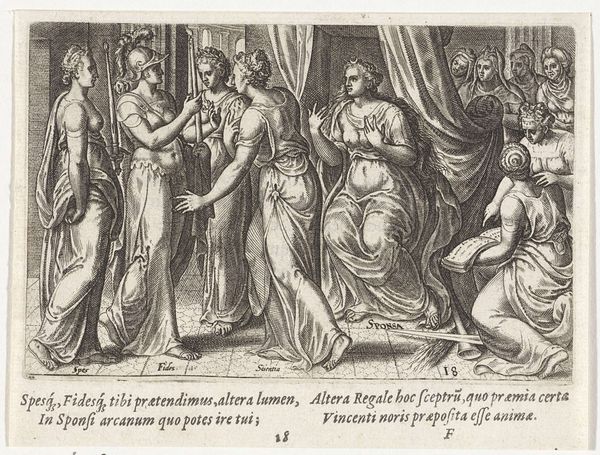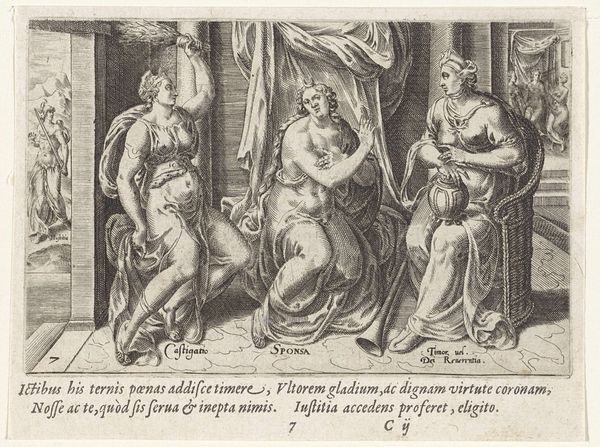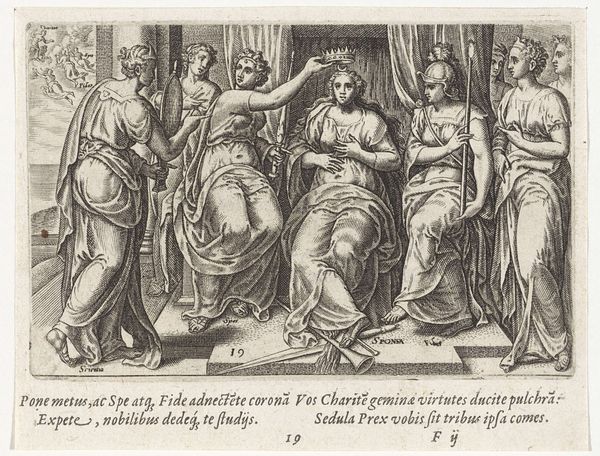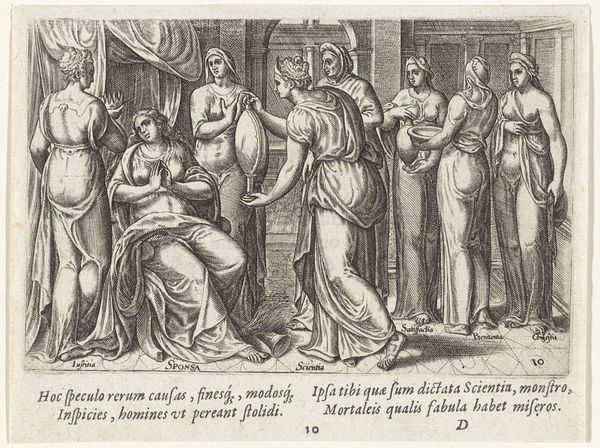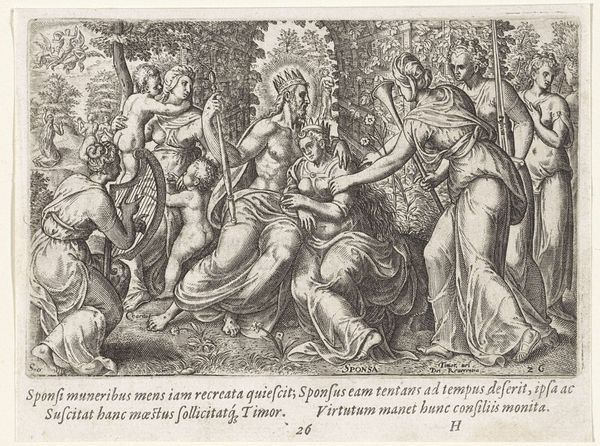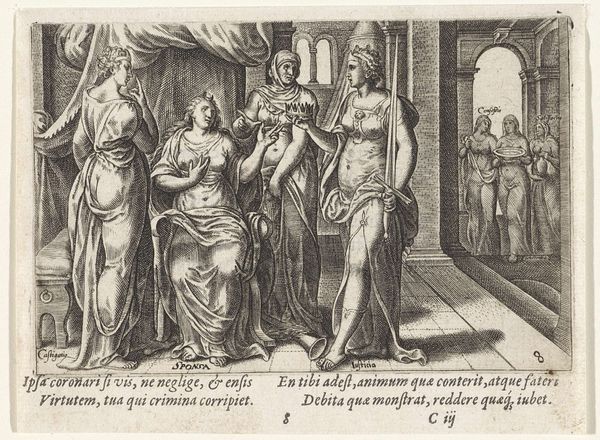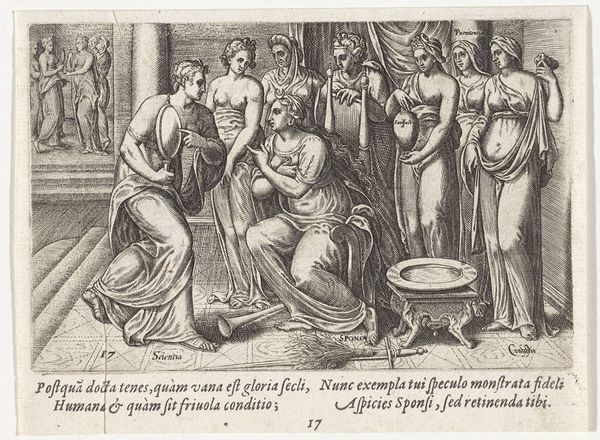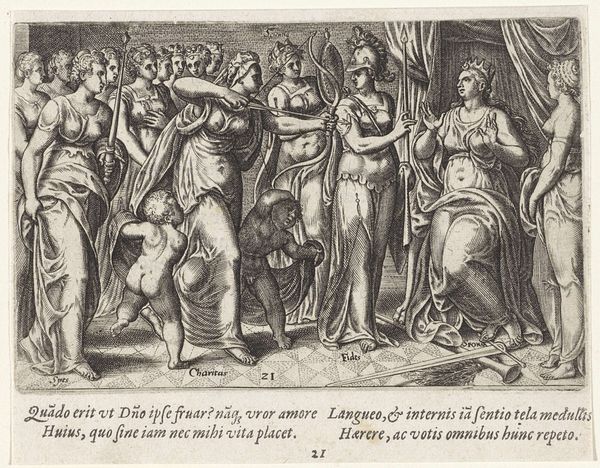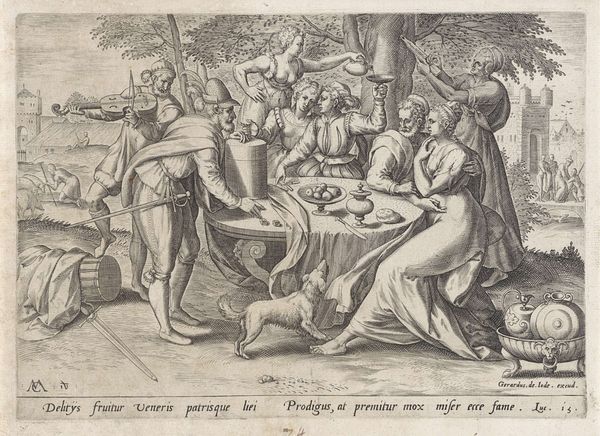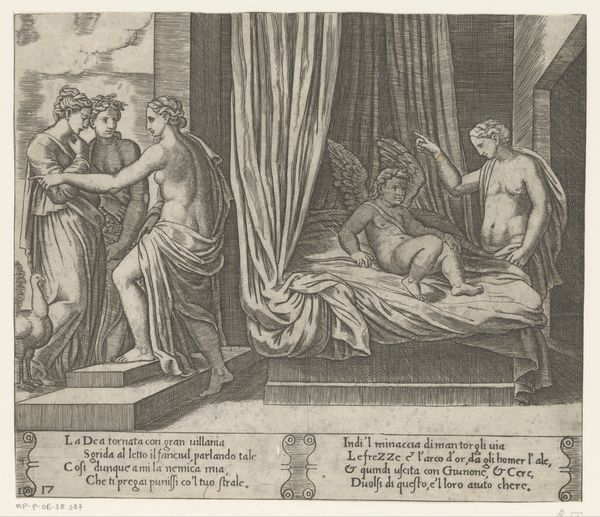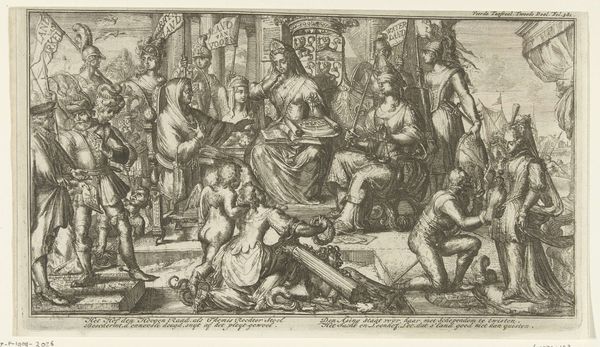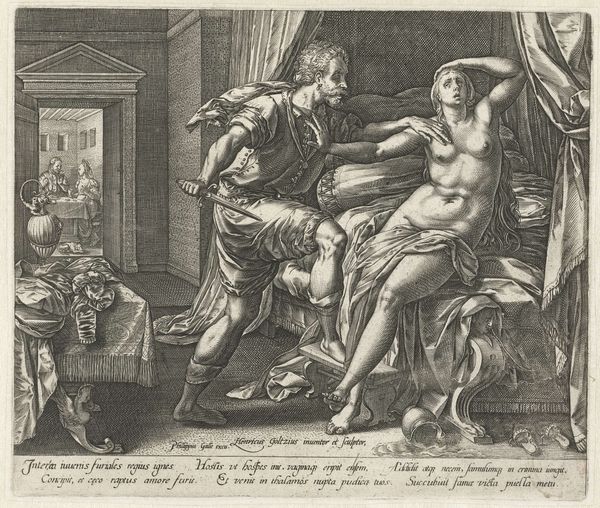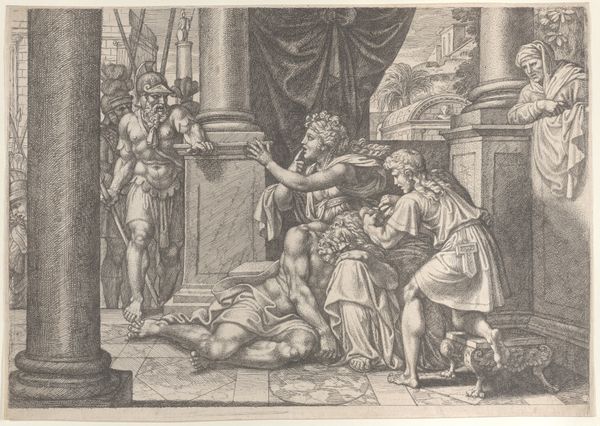
Dimensions: height 92 mm, width 141 mm
Copyright: Rijks Museum: Open Domain
Curator: This engraving, held at the Rijksmuseum, is entitled "The Bride Among Music-Making Maidens," dating back to 1574, by Wierix. What catches your eye? Editor: It's fascinating how stiff and posed the figures seem, yet the composition has a strange vibrancy. Is this a Mannerist allegory perhaps, the bride looking a little overwhelmed amidst the flurry of musicians? Curator: Indeed, it’s a compelling blend of Mannerist style with hints of Baroque sensibilities. Wierix clearly employs allegory, placing the bride—representing perhaps the soul—within a staged environment of musical harmony, the maidens symbolizing different virtues contributing to a successful union. But whose union? And what type is it? Editor: Perhaps this print served some didactic purpose, suggesting that a virtuous life, full of harmonious acts, leads to spiritual richness—to the metaphorical wedding of the soul and the spirit, as indicated in the Latin text inscribed at the bottom? It reads as highly gendered, too, framing virtue through the lens of a bride in the 16th century. We might unpack that. Curator: Precisely! Examining this work within its socio-historical context, we see how constructions of ideal womanhood, marriage, and spiritual devotion intertwined with political and religious ideologies of the era. The very act of portraying these figures with such formality conveys a deliberate message. Editor: It’s that very formality that jars me. It presents a specific notion of grace, carefully managed. The bride’s passivity, surrounded by active virtues presented as female figures. It raises many questions about power dynamics and expectations for women at the time, especially viewed from a contemporary perspective. How might we read this now, beyond art historical terms? Curator: By situating this work within contemporary theory, we see a layered engagement, challenging not just the aesthetic values of the era, but also unveiling power structures that underpin gendered expectations even now. It’s in considering art’s connection to identity, race, gender, and power dynamics that new dialogues with history arise. Editor: This offers a lens for viewing this image, and others from the time, within shifting understandings of these critical contexts. Thank you. Curator: Indeed. Thanks to this dialogue, we see beyond the apparent virtues into a mirror reflecting on ongoing gender and societal conversations.
Comments
No comments
Be the first to comment and join the conversation on the ultimate creative platform.
